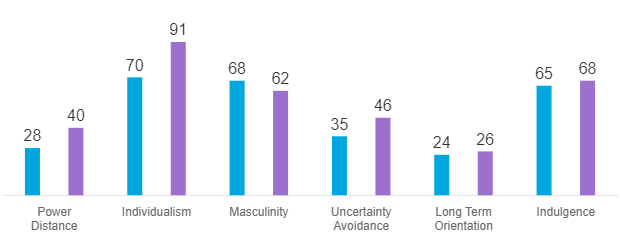Artifact 3
While not the most academic-laden assignment, I ended up taking a lot away from the Happiness Item to Archive. Looking at things that bring me happiness, both in the past and right now, gives me interesting insight into who I am and who I used to be. A lot has changed, between having children, a career, and newfound interests, which have led to different methods of finding happiness. For example, happiness used to be hanging out at the skate park with my friends. Now, happiness is watching a movie with my wife and making jokes just to hear her laugh.
Through this assignment, I was able to take inventory on things that make me happy. I was also forced to determine whether or not things in my life were simply nostalgic, rather than joy inspiring. This Marie Kondo-esque approach allowed me to realize that I was holding onto things that didn’t really make me happy, but were, instead, nostalgic. As I said, I took quite a bit away. This assignment also allowed me to explore the connection between happiness and health. In my opinion, happy is healthy more so than health is happiness.

This image represents a lot of happiness for me. Kids make me happy and making people laugh makes me happy. There is nothing in this world like kids laughing. Joking and laughing with someone is extremely fulfilling, and being the cause of another’s happiness is happiness in itself.
Artifact 2
Looking at gender stereotypes with my wife and son was an interesting activity. I discovered that my general stereotypes for occupations differ from my wife’s. interestingly, though, my son provided the same answers as she did. The results across the board showed 7 occupations were held by women and 6 were held by men. Doing the activity together shined a light on our perceptions of gender in the workforce.
Upon further thought into the results, it dawned on me that our gender stereotypes in occupations may have different roots. While I can only speak for myself, I am tempted to assume the following is true for my wife as well as me: we have an ingrained idea of gender roles in the work force, but those ideas change based on what we see in ourselves or in our own experiences in those occupations.

This image represents a sort of “reversal” in gender stereotypes. While the image is supposed to represent a sort of irony, the recognition for the need to remove stereotypes in the workforce makes it even more ironic. Women and men can and should be considered for all occupations on an equal basis. While there might be need for one over the other in extremely specific circumstances, the move for equality must be addressed.
Artifact 1
Comparing two countries together through the Hofstede Institute provides an interesting look into the cultural makeup of each. Power Distance, Individualism, Masculinity, Uncertainty Avoidance, Long Term Orientation, and Indulgence are all measured. This insight allows people to see, culturally, how a country views their ability to influence decisions, their focus on individual differences, competitiveness, views on absolutes, their views on planning for the future, and to what extent members of society spoil themselves. Comparing The United States to other countries in an interesting exercise.
Being of Irish upbringing, I compared The United States to Ireland. Both countries score relatively the same, but two areas stood out to me among the others: Individualism and Uncertainty Avoidance. Ireland is less individualistic and more fact-based than the U.S. Through the comparison, I can assume that the culture in Ireland, while different, maintains very similar values to that of home.

This chart from Hofstede Insights illustrates the comparison between The United States an Ireland. The areas covered are Power Distance, Individualism, Masculinity, Uncertainty Avoidance, Long Term Orientation, and Indulgence. The scores show how strong each country fits into the specific categories.